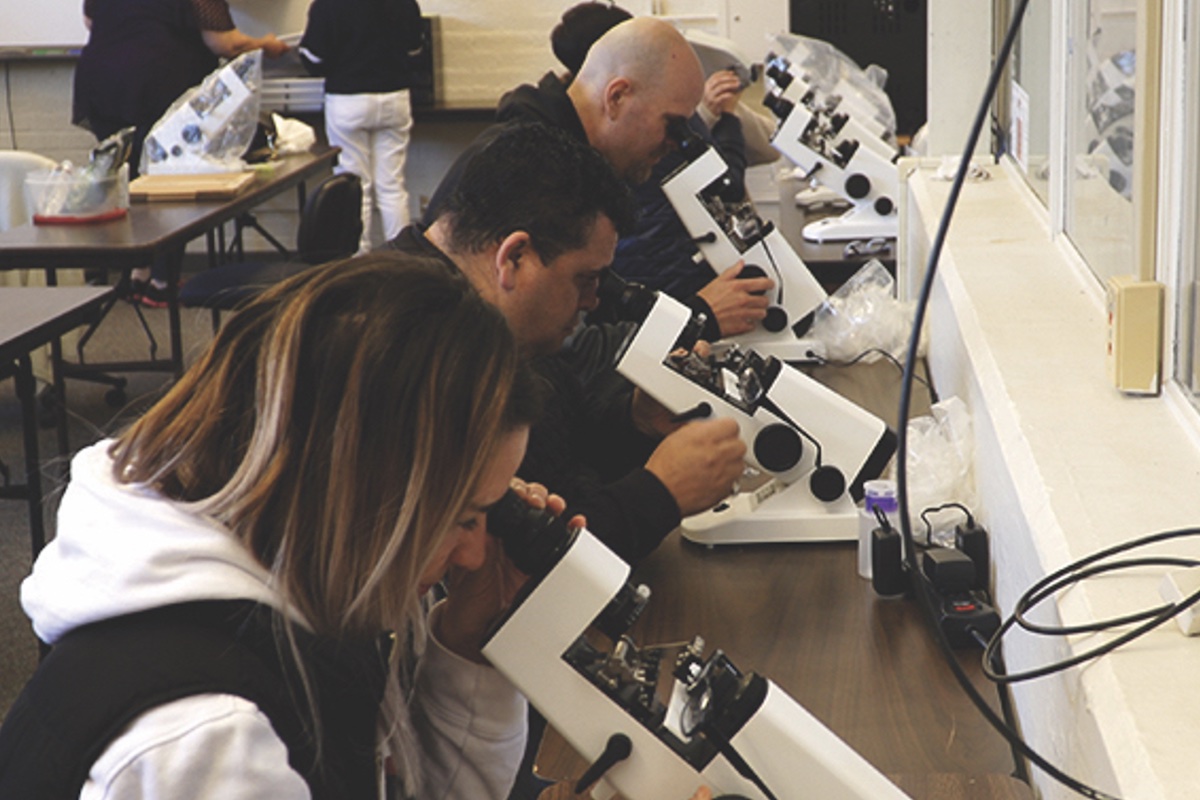Optical Assistant Training Program Leads to Good-Paying Job, Helps Fill Optician Needs in Contra Costa County
One way the Workforce Development Board of Contra Costa County (WDBCCC) works to build an inclusive, qualified workforce for the county is by drawing upon our vast network of community relationships to help businesses and programs thrive.
It’s in this way that we helped to support the Optical Assistant Training Program at Martinez Adult Education. The no-cost 16-week program trains students for entry-level jobs as optical assistants at Walmart, Costco, Warby Parker and other opticians. Because the program allows students to work while they learn and can lead to a starting wage of at least $18-$20 an hour – or an even higher hourly rate for workers already in the field – it has drawn great interest from prospective students. It’s attractive to employers because of the steady pipeline of qualified workers it provides.
Suzanne Murphy, director of adult education at Martinez Adult Education, said the connection WDBCCC helped the program make have been extremely helpful to the school’s student and employer recruitment efforts, as the school builds up the program. The adult school primarily serves underrepresented members of the community who need training to be able to enter the workforce.
“They have the connections within the community that we don’t,” Murphy said.
The Optical Assistant Training Program
The Optical Assistant Training Program is a state-approved apprenticeship program. Murphy said it first launched in 2008 but had to stop being offered in 2013, after state funding for adult education was decimated. It wasn’t until 2015-16 that adult education received dedicated state funding, and the optical program was reinstated in 2018.
For the past three years, Martinez Adult School has been working to rebuild the program. The curriculum for the four-month program is broken into five modules. As students progress toward the last modules, new students begin the first modules, allowing the program to offer rolling enrollment dates.
“It works out really well because you’ve always got people coming in new, and you’ve always got people who have been there a while, so it’s a very supportive class,” Murphy said. “They help each other out.”
The classes have about 15 students each, some attending in person, with pandemic safety measures in place, and others attending via Zoom. All students must complete a hands-on component of the curriculum that lasts 4 weeks. The school week is Monday through Wednesday, from 8:30 a.m. to 3 p.m.
Students can work in the field part time while they go through the program, or they can complete the program and then enter the field. As part of the apprenticeship, Murphy and her team track the graduates’ progress in the field for about a year after they complete the program, getting updates from their employers about how much time they spend serving patients, operating optical instruments, and providing customer service.
Optical Training Optimal for New Careers or First Careers
The Optical Assistant Training Program is open to adults of all ages. Murphy said they have placed program participants in their early 20s, as well as those in their 60s. It has attracted people in diverse situations looking for new skills, from refugees to mothers of young children to hairdressers looking to reskill after their businesses were impacted by the pandemic.
“We’re very much about meeting the needs of students exactly where they are when they come in,” Murphy said. “If they are ready to go, we meet them where they are.”
A good number of program participants already work in the field and are taking the training to boost the pay they receive in their current job. For example, Murphy said, Walmart sales associates making minimum wage will often take the training because, in only 16 weeks, they can go from earning $15 an hour to $21 an hour, if they pass the industry certification exam.
The school pays for students to take the National Opticianry Competency Exam (NOCE), offered by the American Board of Opticianry, after they complete training.
In 2019-2020, 22 students completed the program, and nine took and passed the certification exam. Fifteen of the students went on to be employed in the optical field. In 2020-2021, 11 students completed the program, and eight are working full time in the field.
“Our flexibility and our short-term training and our connections with employers make it very optimal for anyone looking to get into a new career or into a first career where they could make $20 plus dollars an hour and grow,” Murphy said.
Interested in the Optical Assistant Training Program?
If you are interested in enrolling in the Optical Assistant Training Program at Martinez Adult School call 925-335-5890 or email Alisia Swafford aswafford@martinez.k12.ca.us. Employers interested in participating in the apprenticeship program may contact Suzanne Murphy at smurphy@martinez.k12.ca.us or 925-335-5803.
Photo Caption: Students in the Optical Assistant Training Program at Martinez Adult Education practice using lensometers.





